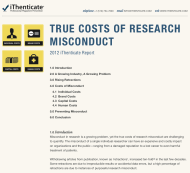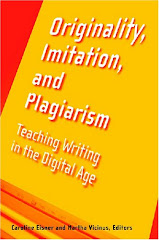Is the pressure of the publish-or-perish mentality driving more researchers to commit misconduct? By Tia Ghose
After six articles from a single research group—the laboratory of Naoki Mori at the University of the Ryukyus in Japan—were retracted from Infection and Immunity earlier this year, Editor-in-Chief Ferric Fang did some soul searching. He and Arturo Casadevall, editor-in-chief of the American Society for Microbiology journal mBio and Fang’s long-time friend and colleague, decided to explore the issue more deeply in an editorial published this week (August 8) in Infection and Immunity.
Fang, a bacteriologist at the University of Washington, recently talked with The Scientist about the rising number of retractions, why high profile journals may have more retractions, and what pressures lead some scientists to fudge their data.
The Scientist: Tell me a little more about the retractions in the Infection and Immunity articles.
Ferric Fang: [An investigation by the investigator’s institution found that] gel pictures had been cut and pasted, and then misrepresented to be different things. We reviewed all the manuscripts and came to the conclusion that the institution was correct. At this point we notified the investigator of our findings and we invited him to reply and try to explain the findings. Through this discussion, we reached our conclusion that in fact there had been inappropriate manipulation of these figures.
This led us to do some soul searching about why misconduct occurs and whether retractions are really all there is to it—and they’re pretty rare—or whether there’s a lot more misconduct going on, and retractions are the tip of the iceberg. And I’m sorry to say I’ve come more or less to the latter conclusion.
TS: In your editorial, you note that retractions are on the rise. Why is that, and is there any way to reverse the trend?
FF: I think it behooves scientists to take a look at the way we have organized the scientific community and the kinds of pressure we put on scientists. We have a situation now where people’s careers are on the line, it’s very difficult to get funding, and getting funding is dependent on publication. They’re human beings and if we put them under extraordinary pressures, they may in some cases yield to bad behavior.
TS: You also developed the “retraction index,” a measure of a given journal’s retraction rate, which showed the rate of retraction was positively correlated with the impact factor of the journal. Why do you think that is?
FF: The idea to look at the correlation between the number of retractions and journal impact factor was first suggested by my co-author, Arturo Casadevall. One of the reasons we devised this retraction index is the idea that maybe the pressures to try to get papers in prestigious journals was a driving force in encouraging people to engage in misconduct. I’m not excusing the behavior by any means at all. But I know of cases, for example, where scientists have committed misconduct, who if they’re not successful in their research, they’ll lose their job and they might be deported from the country. So these are extraordinary pressures that are being put on people. I don’t think it’s going to bring out the best science—it’s going to discourage a lot of things we want to have in science, like people feeling free to explore and take chances.
TS: Is it possible that there are more people looking at those top-tier journals, so the mistakes are just caught more?
FF: That’s certainly a possibility. Extraordinary claims require a higher bar before the scientific community accepts them, and I think some of this work that’s published in the glamour mag journals—Science, Nature, Cell—are in those journals because they’re sensational: things like the arsenic using bacterium for example, or the novel murine virus that was associated with chronic fatigue syndrome. These claims, because they have such enormous implications and because they’re so sensational, they’re going to be subjected to a very high level of scrutiny. If that claim was made in an obscure journal, it might take a longer time [to] attract attention.
TS: Reviewers are the main route to catch misconduct before publication, but retractions are on the rise. Is there a better system?
FF: I don’t know that there is a better system… We’ve had a number of times where questions have been raised about whether data are fishy or not, and we haven’t been able to conclusively establish that. And you don’t have access to the primary data, right? You don’t have the lab notebook, you’re not there at the bench when the person is doing that experiment.
Reviewers may call into question certain observations, but if you have a single lane in a gel that’s beautifully spliced in but is actually lifted from another paper in another field, from the same lab four years earlier in a completely different journal, it will just take dumb luck for the reviewer to realize that.
TS: What if people just submitted their raw data when they submitted a paper?
FF: I think it would make the job of reviewing incredibly more challenging. But I don’t think even that can completely solve the problem. You don’t have any way of knowing that what is sent to you is really complete or accurate. If somebody is bound and determined to commit misconduct, they’re going to be very difficult to detect.
F. Fang, A. Casadevall, “Retracted science and the retraction index,” Infection and Immunity, doi:10.1128/IAI.05661-11, 2011.







